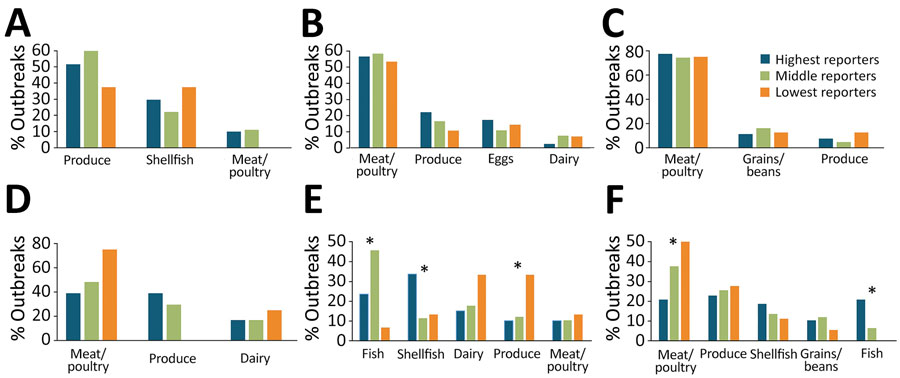Volume 28, Number 6—June 2022
Synopsis
Foodborne Illness Outbreaks Reported to National Surveillance, United States, 2009–2018
Figure 4

Figure 4. Most common foods implicated in foodborne illness, by detailed food category, Foodborne Disease Outbreak Surveillance System, United States, 2009–2018. Asterisks (*) indicate statistical significance (p<0.05 by Fisher exact test). Data are shown for (A) norovirus, 216 cases; (B) Salmonella, 321 cases; (C) bacterial toxins, 209 cases; D) Shiga toxin–producing Escherichia coli O157, 76 cases; (E) illness of other known etiology, 715 cases; (F) illness of unknown etiology, 191 cases.
Page created: April 13, 2022
Page updated: May 22, 2022
Page reviewed: May 22, 2022
The conclusions, findings, and opinions expressed by authors contributing to this journal do not necessarily reflect the official position of the U.S. Department of Health and Human Services, the Public Health Service, the Centers for Disease Control and Prevention, or the authors' affiliated institutions. Use of trade names is for identification only and does not imply endorsement by any of the groups named above.